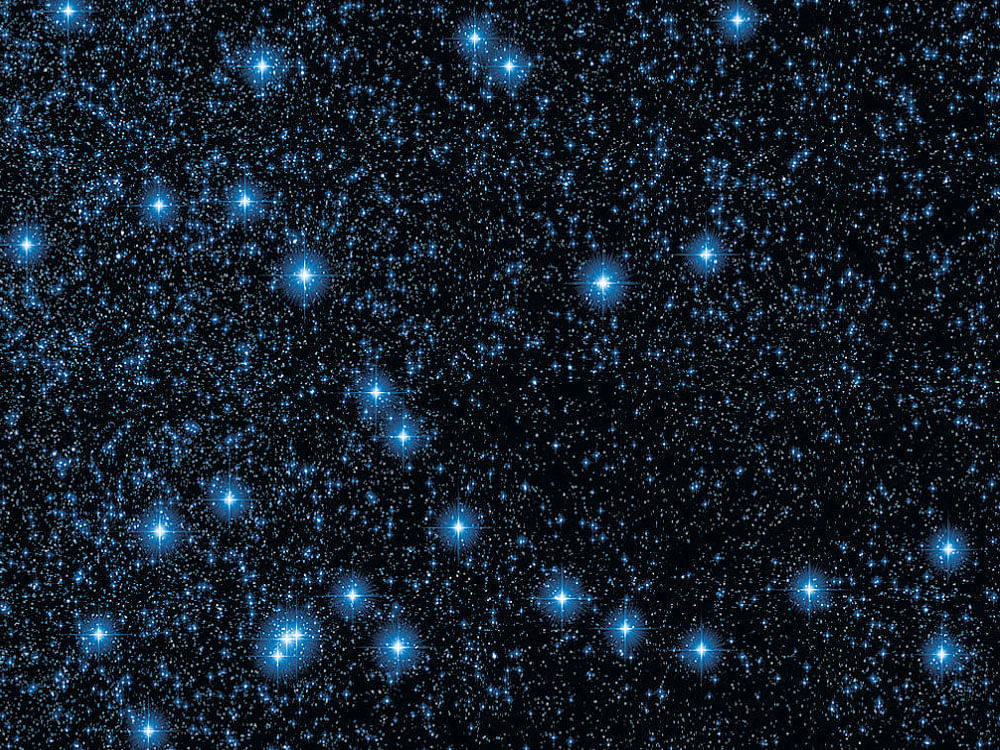
Which branch of science has the worst trouble with names? You might think it’s physics, which has bestowed whimsical-sounding names like quarks, neutrinos, selectrons and bosons on the most elemental constituents of nature. But in astronomy the confusion can be, well, cosmic.
Where would we be without the North Star, also known as Polaris, Alpha Ursae Minoris, HD 8890 and a host of other names including (in Inuit) Niiqirtsuituq? The stars are our oldest promise of order in the universe and the most profound symbols of our possible destiny.
But only a relative handful of the billions of twinkling lights in the sky have names, misspelled and mistranslated as they have been handed down through the ages in a variety of cultures, recognisable to the average adult who probably lives in a city and can’t see many of the stars anyway. Still, more stars have designations using Greek letters to rank them by brightness within their constellations, but constellations have arbitrary and shifting boundaries, and are culture-specific anyway. All stars do have numbers. In fact, many have more than one number, corresponding to their listings in the voluminous catalogues that have been compiled over the century by astronomers.
The PPMXL catalogue, combining data from the United States Naval Observatory and the University of Massachusetts, USA lists the positions and motions of some 900 million stars. This makes for awkward moments when modern astrophysics vaults one of these previously anonymous stars into the limelight, because it is exploding weirdly or turns out to harbour possibly habitable planets. Such dramatic destinations as HR 8799, HD 85512 and Gliese 581 don’t exactly trip off the tongue.
The first set
Now, however, the International Astronomical Union (IAU), an organisation of stargazers, is coming to the rescue. In November, it published what it calls “the first set” of approved names for 227 stars. The IAU has traditionally concerned itself with policing the names of asteroids, craters and comets, and famously demoting Pluto from full-planet status 10 years ago. It is also worth reminding readers here that the IAU’s hegemony is absolute and cosmic; no amount of money donated to a registry or anywhere else will get your name officially on a star. Nevermind the engraved certificate that comes along with it.
The problem of star names came up in 2015 when the astronomical union ran a contest to name some of the new planets that were being discovered in droves around other stars by NASA’s Kepler spacecraft and ground-based astronomers. The game included names for the stars around which those new worlds were orbiting. It turned out that some already had names, albeit not ones that were well known, even to the professionals: Edasich, for example, an orange star in Draco, the Dragon, whose name derives from an Arabic term for “male hyena.” Or Ain,
Arabic for “eye,” an orange giant star in Taurus, the bull.
Should they overwrite these names by popular vote or give them new life? The committee opted for tradition. The result was the formation of a new IAU committee, the Working Group on Star Names. Eric Mamajek of the Jet Propulsion Laboratory, the chairman of the group, said its main priorities so far have been collecting star names from scientific literature and astronomical cultures around the world. The new list is the first fruit of their efforts. How far it goes will depend on how interested the international community is in having a mechanism for naming interesting objects, Eric said, noting that planetary astronomers have had committees for naming craters, asteroids and such for decades “with only minor hiccups.” “The alternative is chaos,” he added.
The first list contains the most well-known stars, and their inclusion will prevent the names from being used for something else, like an asteroid or an exoplanet, Eric said. Their names go back as far as the Arab astronomer Abd al-Rahman al-Sufi in the 10th century, but the words have been Latinised and misspelled over the years. Eric said he had found 30 versions of the star Fomalhaut in astronomical literature.
Sirius, the brightest star of all to the eye, just now making its presence known in the winter sky, also goes by the names of the Dog Star, Aschere, Canicula, Al Shira, Sothis, Alhabor, Mrgavyadha, Lubdhaka and Tenrōsei, as well as Alpha Canis Majoris, after its constellation, Canis Majoris, the big dog.
Not all the names on the new list are so familiar. I never knew there was a star named Musica. Or Mimosa, the second brightest star in the Southern Cross, or Crux. Just saying the name made me want to drink one, settle into a hammock and gaze up at the constellation.